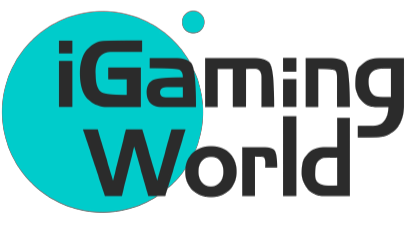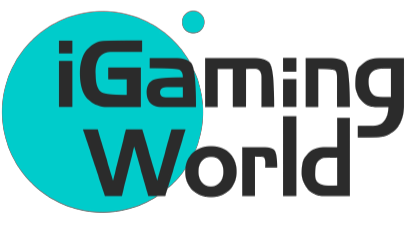The Game Safety Institute is aiming to provide a holistic approach towards player safety. The industry will be able to accept full responsibility for their products and actions once they understand the true impact of those on players. This is a real shift in thinking about risk from the perspective of the product, instead of assuming that the player poses the greatest risk. What is there not to like?
In recent years the responsible gambling sector has seen a growth, as many new companies have sprung up, devoted to prevention and analysis, or taking a different approach.
It’s doubtful that players have made any real progress in terms of effective intervention, despite the fact there are many people who do excellent work.
Simo Dragicevic and Sarah Ramanauskas. Ramanauskas has worked with BetKnowmore, Gambling Integrity and The Howard League for many years. Dragicevic was perhaps most well-known for his work at Playtech after founding BetBuddy. The combination of their skills, and the departure from standard practice in regards to approach seems like an excellent way for them to provide long-term care.
Game Safety Institute, a new initiative by the two partners, aims to integrate all aspects of player experiences to create a comprehensive picture of individual harm. This is a very ambitious and exciting project. But does the gaming industry need yet another RG focused business? Ramanauskas believes that their innovative and valid approach makes it a good fit for the industry. What is this?
The Game Safety Institute can be a good starting point for operators who want to know how they can make their gambling products more enjoyable, useful, and safer.
We have a bunch of people that want to be entertained, so what’s the best product to provide them with?
It seems that the key is a change in focus. Historically, it was up to the players to choose to be safe or to use the appropriate tools. GSI wants to integrate safety mechanisms into all levels and points of interaction, so that they are not aware.
The game ahead
Dragicevic explains that when we consider consumer protection and regulations, the main focus is on the players. Dragicevic says that understanding the players from different perspectives is key to a regulator’s perspective.
Take the UK. There’s a big focus there on making responsible gambling tools more effective and efficient. Gamstop allows you to self-exclude from all online gambling operators through a single point. SENSE is the equivalent on land.
What you are seeing is a tightening up of regulations surrounding the player. There will be a limit to what you can do.
Dragicevic says that there are other factors to consider, such as environment, product or whether the gambler has a harmful gambling behavior.
Where does the idea for GSI originate?
Dragicevic says, “We had lunch together – we both agreed on the importance of product safety.” We’re probably ahead of the curve with this one, but can already see its arrival.
It can both be a blessing or a curse to have an advantage. The pair must prove that the business can survive without destroying the idea, and explain the concept.
It’s an excellent opportunity, but it also creates the benchmarks by which all subsequent measures are measured. What’s the beginning point of such a concept?
Dragicevic says, “We began by sending a questionnaire to our favorite lottery operators and casino operators in the world. We asked about product risks and safety. Is this important for you? What do you think?” How do you decide if your product is safe at this time? The majority of the participants said that this is an important subject, but they don’t believe we are doing it very well.
We then set up our rules to show that we’re a centre for excellence. This is how the people know to come to us when they are thinking about product safety. The Game Safety Institute, a non-profit organization was created.
Game Type
Consider roulette, in all its forms. Although the basic rules of roulette are similar across platforms, the possible harms to a player can vary dramatically.
A casino has people all around, and the dealer is trained to look out for any problem behavior. There are also a certain number of spins every minute.
The fixed-odds terminal, which has much higher spin rates, is a completely different animal. A mechanical roulette, on the other hand, would be found in casinos, though it might not be monitored. You get what I mean. That’s only one of the games.
It does raise the question of how the GSI defines “unsafe”, within a gaming environment.
Dragicevic elaborates: “Gambling is defined by the element of risk when you consider products.” If you remove the element of risk, it is no longer gambling. It also takes away an important part of the gaming experience. It is important to have that risk element in the product.
The GSI Team says they are developing an assessment frame work to examine game design, player education and marketing to allow operators to evaluate elements of risk. The goal is to help operators assess product safety and risk from a strategy perspective, and find out the positive and negative interactions between different elements.
Also, they’re working on an intelligence platform for products. Suppliers can, for instance, upload metadata about slots games, maths, and mechanics. It would be possible to assess these components and segment them into different games and types of play.
Holistic approach
The combination of both approaches promises to make a powerful impact on the way we look at gaming, players, and delivery methods. The operators will have the ability to create sustainable relationships with players by gaining insight into real risk factors for each individual. It’s the long-term relationship that matters most – keeping a customer is cheaper than buying one.
This holistic multi-layered method will also make the old way of delivering RG redundant. No longer will the need for a separate message on responsible gambling be necessary, as everything will be integrated into the overall experience.
Ramanauskas says, “We do not see responsible gaming as a separate issue from the players’ experience. That is how it currently is.” You go to a website and you see some limits on deposit or loss, but they are not part of the actual playing experience. Four clicks will take you to a page with sombre warnings about gambling addiction.
It’s important to understand what a customer wants when they visit your website. Why is the customer there? The gambling industry needs to do this for safer gambling. “It’s all about baking safety into products.”
Dragicevic agrees.
He notes that “responsible gaming should be invisible.” You shouldn’t even have to consider it. There should be policies in place to ensure that it is not all about getting every penny out of a player, and that these policies are not overridden by the other aspects.
It shouldn’t just be “Oh, you should use your deposit limit.” You are responsible for setting your own deposit limits.
Revenue risk?
Operators run the real risk, if they are responsible, of losing players they value to their competitors. There’s also the quarterly dividend which often drives short-term decisions.
Ramanauskas points out, however, that those working in the background are just as important.
She says, “Yeah, shareholders are one important group of stakeholders. But another is your employees.” Glassdoor’s employee reviews were horrendous. “There is a particular operator in the UK who finally lost their license. One reviewer said, “I know that my decisions are immoral and that I am doing the wrong things.”
If the gambling industry is looking to retain and attract the best staff, it must show they care about their customers. Your employees will be unhappy if they feel they have to take moral decisions to convince players to spend money they cannot afford.
It seems that the responsible way is good for everyone.
Jon Bruford is a gambling expert who has worked in the industry for more than 17 years. He was previously managing editor at Casino International, and is currently publishing director with Kate Chambers, and Greg Saint, of The Gaming Boardroom. His large dog has a sensitive digestive system. He spends most of his time in the free-time learning how to remove stains.



